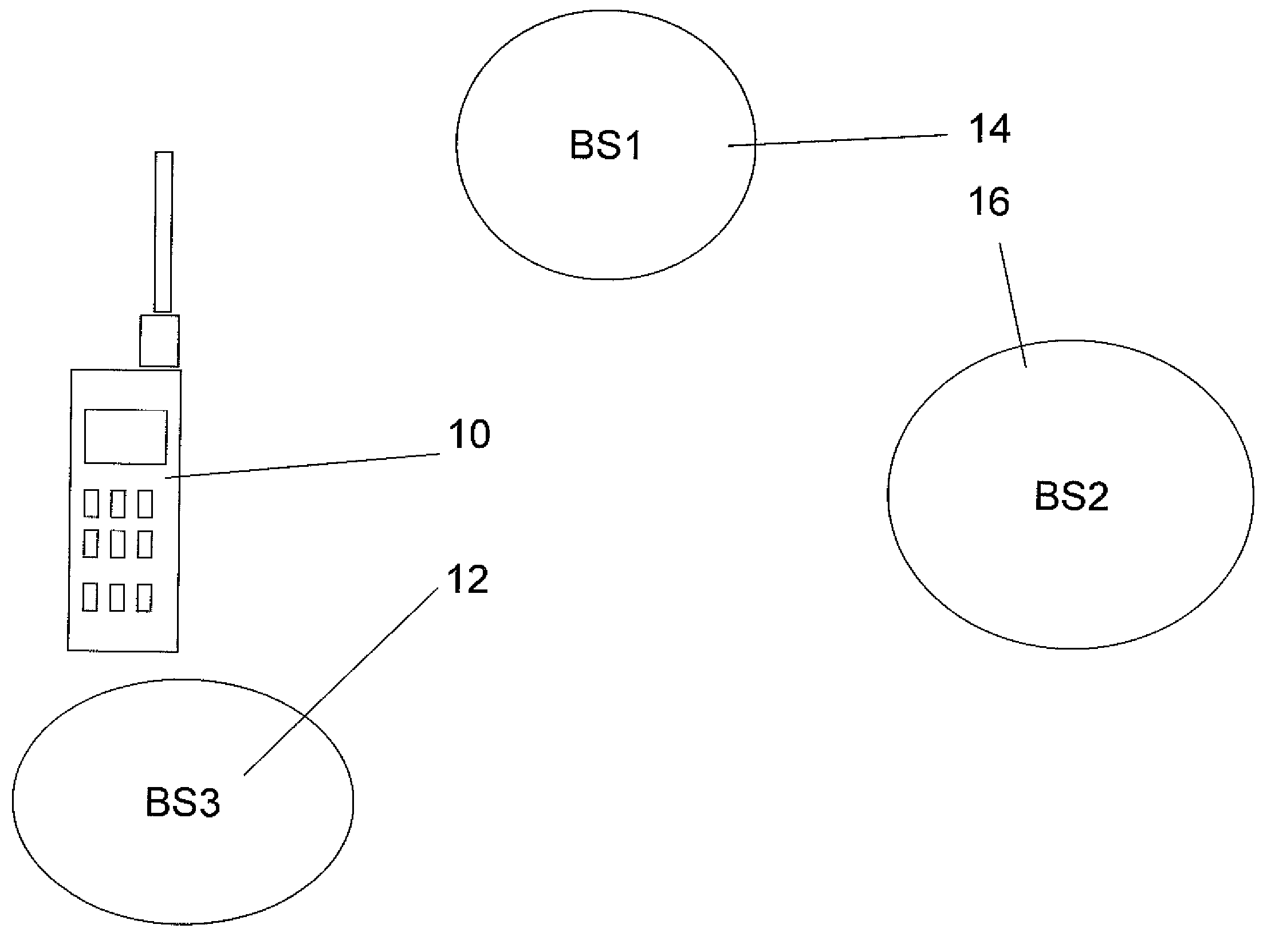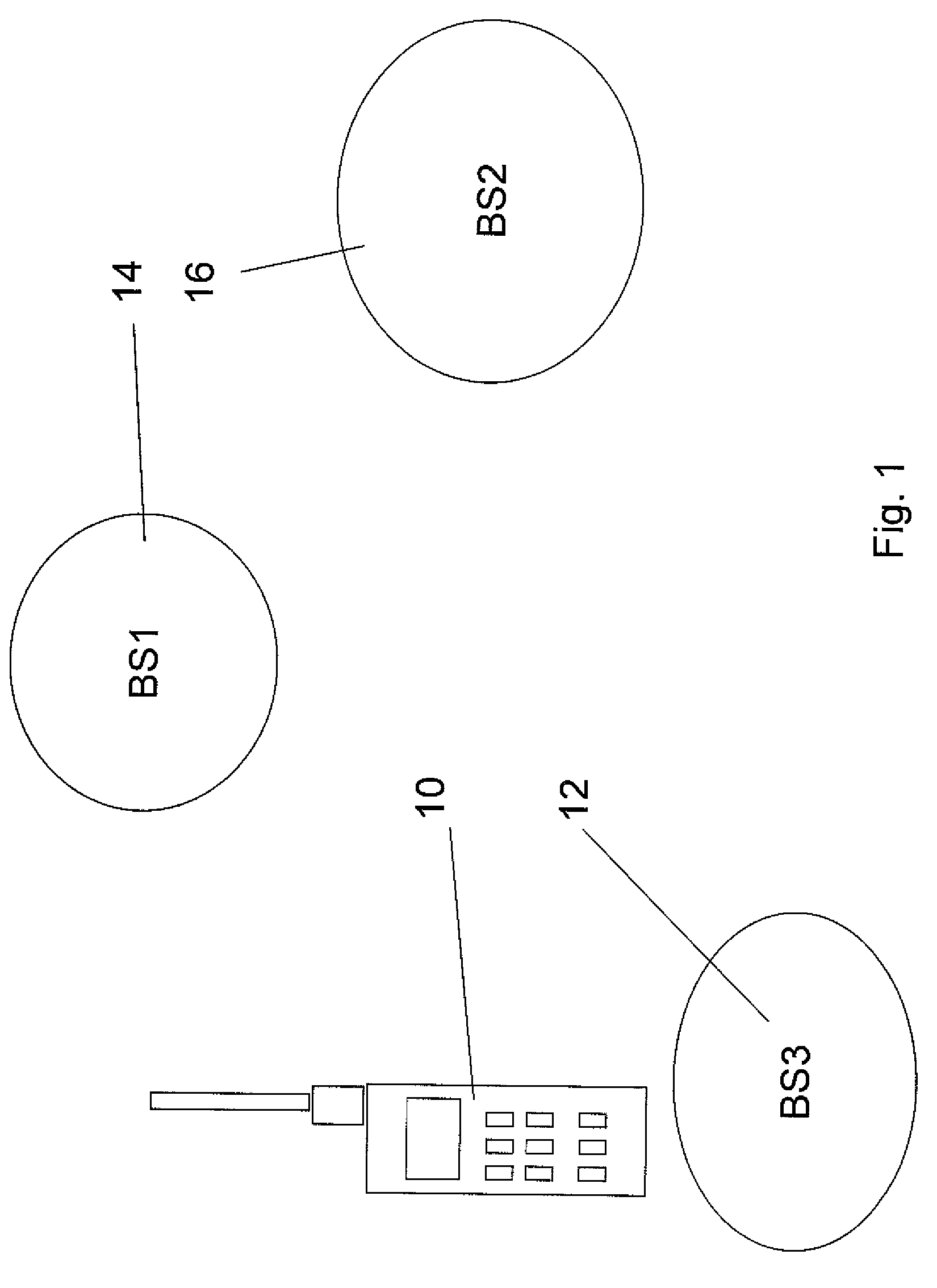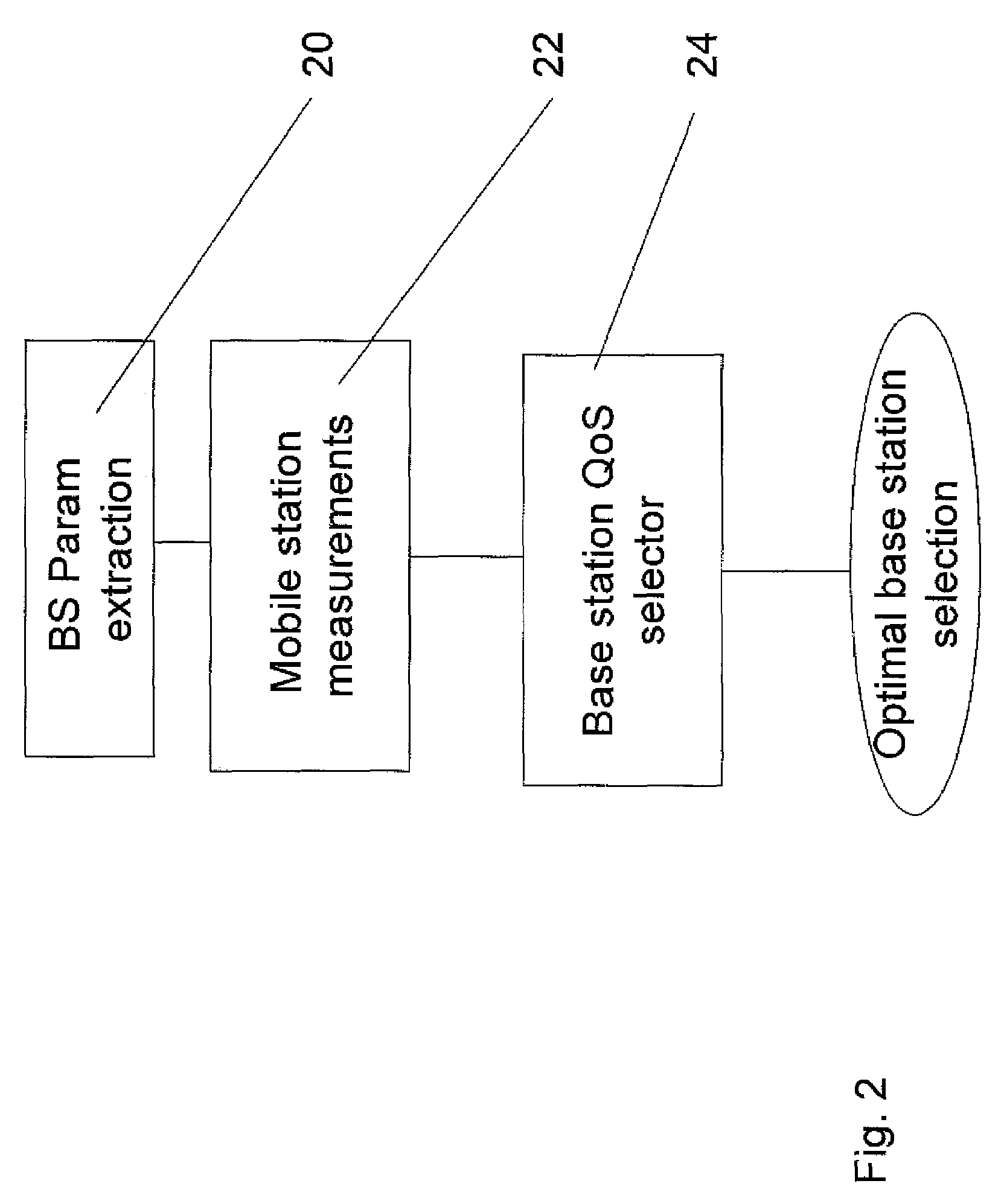Load balancing in wireless networks
a wireless network and load balancing technology, applied in the direction of electrical equipment, wireless commuication services, assess restrictions, etc., can solve the problems of reducing throughput, difficult maintenance for more than a few simultaneous users, and services such as voice over ip (voip) or iptv, so as to achieve the effect of minimizing said interference levels
- Summary
- Abstract
- Description
- Claims
- Application Information
AI Technical Summary
Benefits of technology
Problems solved by technology
Method used
Image
Examples
Embodiment Construction
[0069]The present embodiments relate to load balancing in wireless networks and, more particularly, but not exclusively, to such load balancing in a WiMAX network. Load balancing is provided by a multi-factor selection algorithm in which the mobile station chooses the base station most suitable for its requirements. The selection may be carried out at initial selection or at handover. Factors that may be taken into account include channel condition factors, desired quality of service (QOS), and base station load. In the known art by contrast, base station load has been used in isolation as has signal strength. Base station load is broadcast to the mobile stations as part of the WiMAX standard. The channel condition factors can be obtained or calculated as will be explained below, and the QOS required at any given time depends on the application that the mobile station is currently using.
[0070]The present embodiments provide for a way in which channel conditions may be obtained and i...
PUM
 Login to View More
Login to View More Abstract
Description
Claims
Application Information
 Login to View More
Login to View More - R&D
- Intellectual Property
- Life Sciences
- Materials
- Tech Scout
- Unparalleled Data Quality
- Higher Quality Content
- 60% Fewer Hallucinations
Browse by: Latest US Patents, China's latest patents, Technical Efficacy Thesaurus, Application Domain, Technology Topic, Popular Technical Reports.
© 2025 PatSnap. All rights reserved.Legal|Privacy policy|Modern Slavery Act Transparency Statement|Sitemap|About US| Contact US: help@patsnap.com



